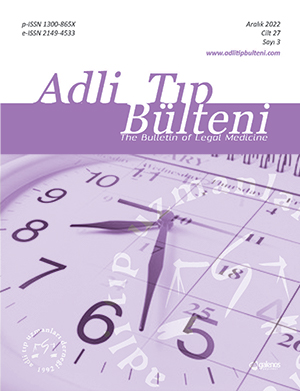Analysis of Forensic Cases in Patients Aged 65 and Older Presenting to the Emergency Department
DOI:
https://doi.org/10.17986/blm.1745Keywords:
aged, elder abuse, falls, forensic medicine, nursing homes, traffic accidentsAbstract
Objective
The aim of this study is to analyze individuals aged 65 and older presenting to the emergency department (ED) with forensic cases such as traffic accidents, falls, and abuse, and to evaluate the outcomes of these cases.
Methods
In this retrospective study, forensic cases in patients aged 65 and older who presented to the adult ED of a tertiary university hospital between November 1, 2023, and November 1, 2024, were analyzed. Data were recorded based on presenting symptoms, trauma findings, and ED outcomes (admission, discharge, death, etc.).
Results
In elderly patients aged 65 and older presenting to the ED with forensic cases, traffic accidents and falls were the most common reasons for presentation. A majority of cases involving domestic violence, suicide attempts, and suspicion of neglect/abuse were found in female patients. Among the cases with severe outcomes, those presenting due to traffic accidents, falls, general condition deterioration, multiple drug ingestion, and substance use were more prominent. Most patients referred from nursing homes showed signs of neglect, with falls being the leading reason for presentation in this group.
Conclusion
Traffic accidents were the most common forensic cases in the geriatric population, while other cases were less frequent. Multidisciplinary approaches with forensic medicine units and training during emergency medicine residency are crucial for better case detection. Preventive measures, especially for falls in nursing home neglect cases, and proper referrals after ED discharge, will improve treatment management.
Downloads
Published
Issue
Section
License
Copyright (c) 2025 The Bulletin of Legal Medicine

This work is licensed under a Creative Commons Attribution 4.0 International License.
The Journal and content of this website is licensed under the terms of the Creative Commons Attribution (CC BY) License. The Creative Commons Attribution License (CC BY) allows users to copy, distribute and transmit an article, adapt the article and make commercial use of the article. The CC BY license permits commercial and non-commercial re-use of an open access article, as long as the author is properly attributed.

